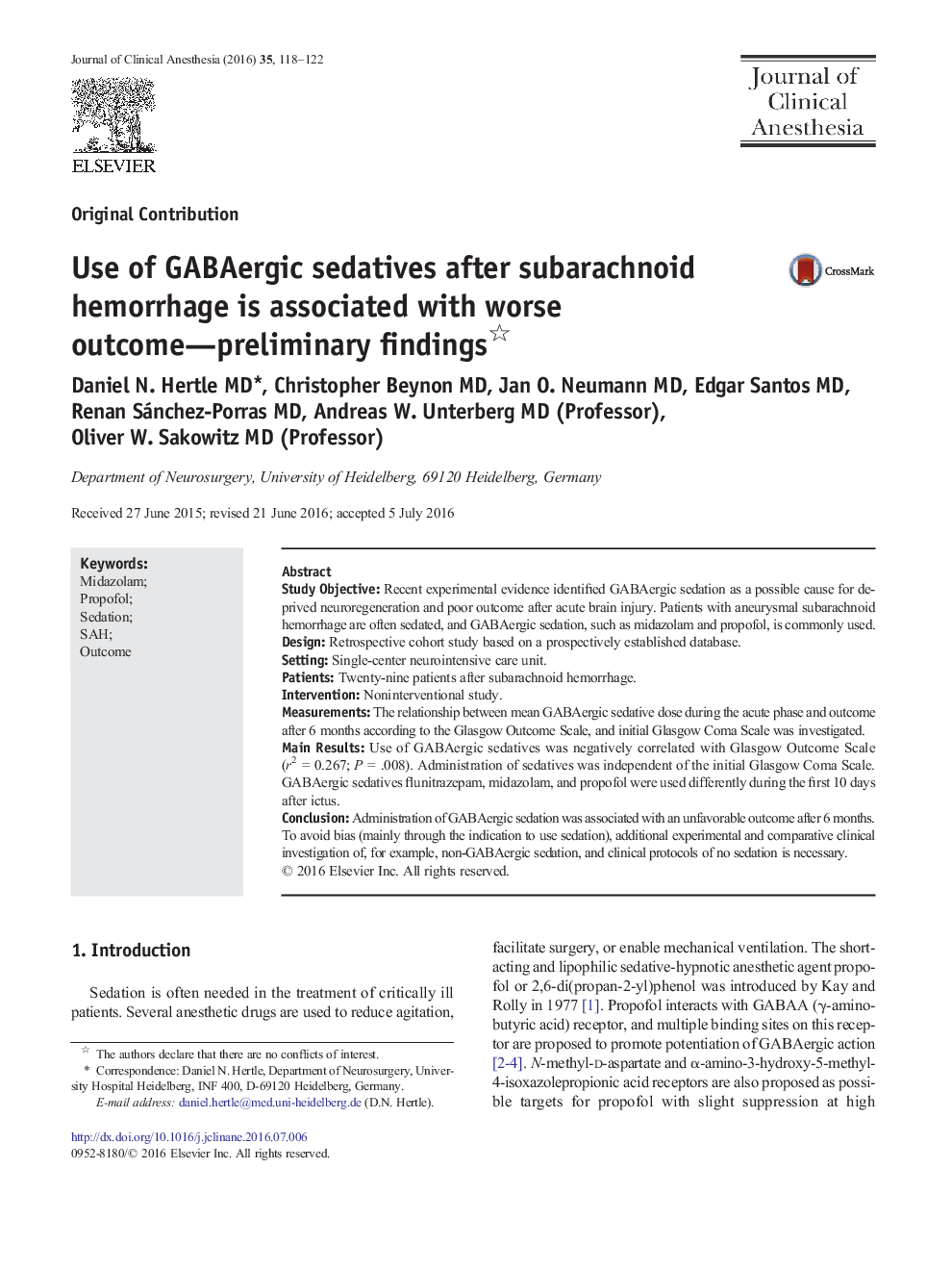| Article ID | Journal | Published Year | Pages | File Type |
|---|---|---|---|---|
| 5884274 | Journal of Clinical Anesthesia | 2016 | 5 Pages |
â¢Continue our work with focus on use of sedatives after acute brain injury.â¢Hot Topic (Coburn, Pandharipande, Sanders. Crit Care Med 2014 Jan;42(1):211-212).â¢Supporting sedation free sedation protocols and non-GABAergic drugs for sedation.â¢Linear correlation between worse outcome and administration GABAergic drugs.
Study ObjectiveRecent experimental evidence identified GABAergic sedation as a possible cause for deprived neuroregeneration and poor outcome after acute brain injury. Patients with aneurysmal subarachnoid hemorrhage are often sedated, and GABAergic sedation, such as midazolam and propofol, is commonly used.DesignRetrospective cohort study based on a prospectively established database.SettingSingle-center neurointensive care unit.PatientsTwenty-nine patients after subarachnoid hemorrhage.InterventionNoninterventional study.MeasurementsThe relationship between mean GABAergic sedative dose during the acute phase and outcome after 6 months according to the Glasgow Outcome Scale, and initial Glasgow Coma Scale was investigated.Main ResultsUse of GABAergic sedatives was negatively correlated with Glasgow Outcome Scale (r2Â =Â 0.267; PÂ =Â .008). Administration of sedatives was independent of the initial Glasgow Coma Scale. GABAergic sedatives flunitrazepam, midazolam, and propofol were used differently during the first 10 days after ictus.ConclusionAdministration of GABAergic sedation was associated with an unfavorable outcome after 6 months. To avoid bias (mainly through the indication to use sedation), additional experimental and comparative clinical investigation of, for example, non-GABAergic sedation, and clinical protocols of no sedation is necessary.
